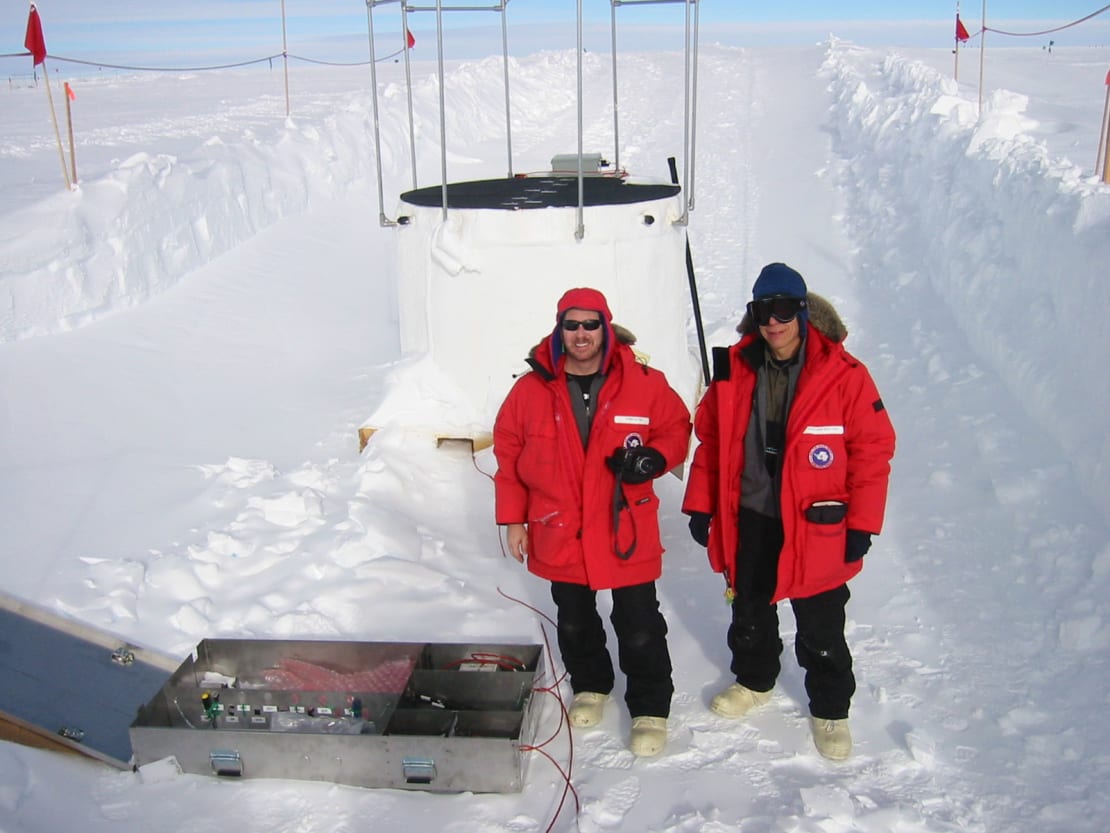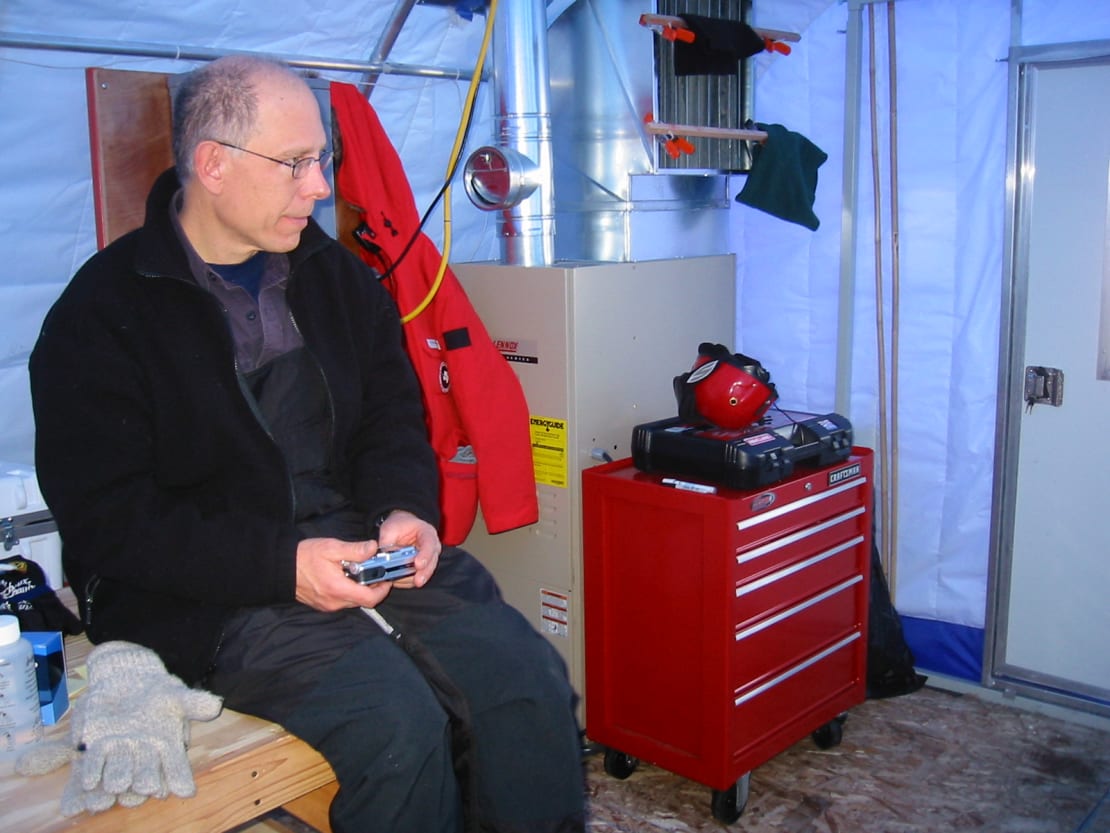
Len Shulman started at Bartol as an electrical engineer in 1980. At that time, it had been only three years since the Bartol Research Foundation moved from the campus of Swarthmore College to the University of Delaware. Bartol was still an independent institution, with Martin Pomerantz as director. Among Len’s many tasks for various research projects at Bartol, the most important was overseeing maintenance and operations of neutron monitors in Antarctica, Canada, and Greenland. His first trip to Antarctica was in 1985. He worked on the neutron monitors at McMurdo and at the South Pole, where his office was on the second floor of “Skylab,” the orange, rectangular tower near the Dome.
In 2003, Len began working on design and fabrication of electronics for the freeze-control units used to manage the top-down freezing of the water in the IceTop tanks. The challenge was to maintain circulation of the water through filters in a vacuum system to keep the concentration of air below the saturation level so that the ice would be clear and free of bubbles. His work under the direction of Paul Evenson is responsible for the successful operation of IceTop. He also worked with a local contractor on the water filtration system that accepted water from the IceCube drill system and cleaned it for filling the IceTop tanks.

Len was a regular member of the IceTop team during the austral summer seasons from 2003-04 to 2008-09. In January of 2009, he was completing a stint managing the IceTop deployment. He had already finished his handover report when he
fell ill and had to be evacuated to Christchurch. He had heart surgery there and returned to Delaware about a month later. In the following year, he had further surgery and suffered a stroke that left him partially paralyzed. Since then, he kept himself in good shape physically, but his right arm and his speech never fully recovered. He was remarkable for his positive outlook on life and the cheerfulness he maintained throughout the years until his death on March 30.
Here is what Francis Halzen wrote on the occasion of Len’s retirement in 2010: “Who would have thought that one of the first and most exciting results of IceCube (IceTop actually!) would be the observation of a solar flare that allowed for the determination of its energy spectrum. You will certainly agree with me that we never lose sight of the fact that physics is made possible by a talented technical crew that built and commissioned the detector, IceTop in this case. Len Shulman belongs to that group. We hope that he will read about more discoveries after retiring and I can guarantee that IceCube physicists will not forget that he made them possible.” After retiring, Len indeed stayed in regular contact with his IceCube colleagues at Delaware. He continued to enjoy his wide interests in science, philosophy, music, nature, and travel with his wife Marie. His favorite place was Hawaii. He was on vacation there in March when he suffered a recurrence of his heart problem, which he did not survive.
Len grew up in the Drexel Hill area outside Philadelphia where he began playing the clarinet in high school. His undergraduate degree was in music from West Chester University. He later decided on engineering for his career and studied at Drexel University in Philadelphia. His interest in music continued, as he played clarinet in the Delaware County Symphony (Pennsylvania). In the course of his travels to New Zealand, he became friends with the composer Edwin Carr, who wrote a sonatina for two clarinets dedicated to Leonard Shulman.
His colleague James Roth writes, “Len’s legacy lives on through his work. He designed the electronics that are still running at nine neutron monitor stations around the world and in many other systems that will run into the future. Shulman Peak, Antarctica, is named after Len.